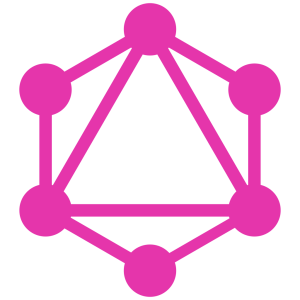Exploring GraphQL and REST APIs: A Quick Guide
In the expansive realm of web development, GraphQL and REST APIs stand as unsung heroes, silently enabling seamless communication between applications. They serve as digital bridges, connecting different software systems. Navigating the dynamic landscape of modern technology, the choice between GraphQL and REST APIs becomes paramount. It’s not just about connecting the dots; it’s about choosing the right way to connect them. This article delves into the intricacies of these API giants – GraphQL and REST – pivotal players shaping the efficiency and scalability of applications. Join us on this journey to understand the importance of making informed decisions in the API realm, where the right choice between GraphQL and REST APIs can truly make a difference
1. Overview of REST APIs
REST, or Representational State Transfer, guides many web APIs. It follows key principles like statelessness and a resource-based structure. Statelessness means each request is separate, no storing of client info between them. Resources, like web pages, are organized with unique URLs.
REST keeps it simple by using standard HTTP methods – GET fetches data, POST creates, PUT updates, and DELETE removes. This straightforward approach makes RESTful architecture a go-to in the industry due to its simplicity and widespread acceptance.
2. Strengths of REST APIs
RESTful architecture keeps things simple and easy to grasp. The way it organizes data is straightforward, making it user-friendly and widely adopted across the industry. Its mature ecosystem means there are plenty of tools and resources available, making development smoother. The statelessness feature is like a superpower – each request is independent, and there’s no need to remember past interactions.
This statelessness not only simplifies things but also makes it scalable, handling more requests without getting bogged down. So, REST isn’t just simple; it’s a reliable choice with a robust background and scalability in its DNA.
3. Limitations of REST APIs
REST, while awesome, has its hiccups. Over-fetching is like buying a whole grocery store when you just need eggs. It’s when you get more data than necessary, wasting time and resources. On the flip side, under-fetching is like going home with just the milk – not enough. It happens when the server doesn’t provide all the needed info, leading to multiple requests and slowing things down.
Now, versioning in REST APIs can be tricky. When you update, clients might get confused – which version to follow? It’s like trying to speak two languages at once. This versioning challenge makes it hard to roll out changes smoothly.
Also, REST can be a bit rigid in data retrieval. Clients often get stuck with fixed structures, unable to cherry-pick data. It’s like being handed a set menu without options to customize. These quirks don’t make REST a deal-breaker, but they’re like speed bumps on the API highway.
4. Introduction to GraphQL
GraphQL is like the cool rebel in the API world. It was born at Facebook, making a splash by solving some issues they had. Unlike REST, it doesn’t force you to take a full menu; it lets you choose. It’s like a tailor for data – you ask for what you need, and that’s what you get. This way, no over-fetching or under-fetching.
Now, GraphQL speaks its own language – a query language. It’s like having a direct chat with your server. You send a query, ask for specific data, and voila! This focus on client-side flexibility is a game-changer. Imagine building an app where you control what data comes in – no more waiting for the server to decide. Big names like GitHub and Shopify have hopped on the GraphQL train for this very reason. It’s not just a trend; it’s a revolution in how we fetch and handle data.
5. Key Features of GraphQL
GraphQL is a data magician when it comes to asking for exactly what you need. Say goodbye to over-fetching, where you get more data than required, and under-fetching, where you’re left wanting more. With GraphQL, it’s like telling your server, “Just the essentials, please,” and that’s what you get – efficient and precise data.
But it doesn’t stop there. GraphQL introduces the superhero move of nested queries. You can grab related data in one shot. It’s like ordering a burger and getting the fries and drink with it – everything you need in a single request. This superpower reduces the back-and-forth with the server, making your app faster and more responsive.
Now, GraphQL isn’t just about asking for data; it’s also about understanding what’s available. It’s like having a map of a shopping mall – you can explore and find what you need. This introspective nature allows clients to query the schema, checking out the available data structures. It’s a bit like looking at the menu before ordering. This self-discovery feature makes GraphQL not just efficient but also user-friendly for developers.
6. GraphQL vs. REST: A Detailed Comparison
let’s delve into a detailed comparison:
- Traditional REST vs. GraphQL’s Client-Centric Approach:
- REST (Representational State Transfer): In REST, the server dictates the structure of the response. When a client requests data, the server decides how the data is formatted and what information is included in the response. Clients have little control over the shape of the data they receive.
- GraphQL’s Client-Centric Approach: GraphQL flips the script. Here, the client takes the reins. Clients specify the exact structure of the response they need by crafting a query. This client-centric approach allows for precision – clients get only the data they ask for and nothing more. It’s like ordering a custom pizza with only the toppings you love.
- GraphQL’s Flexibility for Efficient Data Retrieval:
- REST: With REST, the data structure is predefined by the server. If a client needs additional or different data, they often have to make multiple requests to various endpoints, resulting in potential over-fetching or under-fetching.
- GraphQL: GraphQL’s flexibility shines here. Clients can request exactly what they need in a single query. No more multiple round trips to different endpoints. If you want information about a user and their recent posts, you can ask for both in a single GraphQL query. This ability to fetch precisely what’s needed streamlines data retrieval and minimizes unnecessary data transfer.
- GraphQL’s Single Endpoint vs. REST’s Multiple Endpoints:
- REST: In REST, different endpoints are typically used for different resources or actions. For example, you might have separate endpoints for users, posts, and comments, each serving a specific purpose.
- GraphQL: GraphQL takes a different route. It features a single endpoint for all interactions. Clients can request a variety of data in a single query, reducing the need for multiple endpoints. This consolidation simplifies the architecture and can lead to more straightforward maintenance.
In essence, GraphQL’s client-centric philosophy and flexibility in data retrieval empower developers to fetch precisely what they need in a more streamlined manner, eliminating common issues associated with REST, such as over-fetching and under-fetching. The single endpoint in GraphQL adds a layer of simplicity, providing an alternative to the multiple endpoints characteristic of REST APIs. Each approach has its strengths, and the choice depends on the specific needs and priorities of the development project.
7. Adoption and Ecosystem
GraphQL Adoption: GraphQL is getting popular fast! Many companies are adopting it because it solves data-fetching issues. With GraphQL, you ask for what you need, no more, no less. This simplicity attracts developers. Plus, the GraphQL family is growing, with more tools and libraries popping up. It’s like a tech party, and everyone wants to join.
REST’s Solid Presence: REST is like the wise elder; it’s been here a long time. Many big apps and services use REST because it’s reliable and familiar. It’s the go-to for many developers. REST’s ecosystem is mature and well-established. Even with GraphQL rising, REST remains relevant, keeping the tech world balanced. It’s like the classic that never goes out of style.
8. Use Cases
In this paragraph i will present scenarios for each one of those.
Scenarios Favoring GraphQL:
- Mobile Apps with Varied Data Needs:
- GraphQL Scenario: Imagine a social media app where the user profile page displays a mix of personal details, recent posts, and comments. With GraphQL, the app can request precisely this combination in a single query, optimizing data retrieval for the user’s profile view.
- Dynamic User Interfaces:
- GraphQL Scenario: In an e-commerce application, the product page might need diverse information such as product details, reviews, and related items. GraphQL allows the app to request this varied data in a single query, tailoring the response to match the dynamic nature of the user interface.
- Microservices Architecture:
- GraphQL Scenario: In a microservices environment where services handle specific functionalities, GraphQL provides a unified interface. A client can fetch data from multiple services with a single query, reducing the complexity associated with making multiple requests to different REST endpoints.
Scenarios Favoring REST:
- Limited Client-Side Requirements:
- REST Scenario: In scenarios where a client has straightforward data needs, like fetching a list of items or submitting a form, REST’s simplicity shines. For instance, a weather app that fetches and displays the current temperature may find REST more suitable for its basic data retrieval requirements.
- Fixed Data Structures:
- REST Scenario: When the data structure remains constant and doesn’t change frequently, REST’s predictability is an advantage. For instance, a blog application fetching a list of articles may not require the flexibility of GraphQL, as the data structure remains relatively stable.
- Caching and Resource Efficiency:
- REST Scenario: In situations where caching plays a crucial role, REST’s statelessness can be an advantage. For example, a news website where articles rarely change might benefit from REST’s predictable caching mechanisms without the need for the flexibility offered by GraphQL.
In summary, GraphQL’s flexibility shines in scenarios with diverse and dynamic data needs, especially in environments with complex client-side requirements. On the other hand, REST’s simplicity and predictability make it a solid choice in scenarios where data retrieval is straightforward, and there’s limited need for customization on the client side.
9. Best Practices and Considerations
In the realm of API design, adherence to best practices is paramount for ensuring efficiency and clarity. Here, we outline key practices for crafting RESTful APIs and considerations for implementing GraphQL effectively.
Table 1: Best Practices for RESTful APIs
| Best Practice | Simple Language Elaboration |
|---|---|
| Proper Resource Naming | Choose clear and consistent names for your resources, like “books” instead of complex terms. |
| Versioning Strategies | Plan for changes by using version numbers in your API’s URL, such as “/v1/books.” |
| Stateless Design | Treat each client request independently; ensure it has everything it needs without relying on past requests. |
Table 2: Considerations for Implementing GraphQL
| Consideration | Simple Language Elaboration |
|---|---|
| Schema Design | Plan how different data types (like books and authors) relate in a clear schema, similar to a family tree. |
| Query Optimization | Be specific when asking for data; request only what you need to avoid wasting bandwidth, like ordering a small pizza. |
| Error Handling | Clearly communicate errors to the client, providing informative messages rather than crashing silently. |
| Security Measures | Control access to your GraphQL endpoint using authentication and authorization, like having a bouncer at a VIP party. |
10. Conclusion
In the API world, GraphQL and REST both bring something to the table. GraphQL is like a customizable buffet, letting you pick what you want. REST, on the other hand, is a trusted classic, offering a set menu. Remember, when picking between them, think about your project’s hunger – consider data complexity, what your clients crave, and how much flexibility you need. It’s like choosing between a tailored suit and a comfy pair of jeans; each has its time and place.





